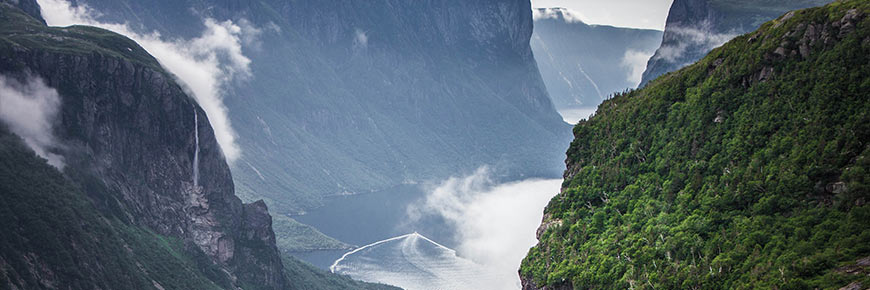
Photo: Guillaume Paquette-Jetten
Weather
Gros Morne National Park
The weather in Gros Morne is unpredictable. There are significant differences between weather conditions in low-lying areas along the coastal plain and the higher elevations of the Long Range Mountains. Be prepared for the worst. Hypothermia can easily occur on backcountry trips if you are not properly equipped.
Spring arrives late in Newfoundland. Many hiking trails remain partially snow-covered well into May. The summit of Gros Morne Mountain is closed annually until 1 July.
July and August bring warmer and drier conditions. The average daytime temperature ranges between 16–25 °C (61–77 °F), with a drop of at least 5° during the night. Depending on the winds, temperatures can change quite suddenly. At high elevations, it can be 2–4° cooler and 10° cooler with a wind-chill. The prevailing winds are from the southwest, and the Gulf of St. Lawrence adds moisture to the strong onshore winds. On average, there is precipitation every two days during the summer.
The weather during September and October is often pleasant. Expect snow at higher elevations by late September. Near the end of October, the weather becomes more unsettled and wetter as winter begins to set in.
Winter brings temperatures ranging from −10–0 °C (14–32 °F) with a 10° drop of temperature at higher elevations. There is significant snowfall in the area: 4–4.5 m (13–15 ft) on average with up to 10 m at higher elevations. January, February, and March are good months for cross-country skiing. In years of high snowfall, snow conditions may permit backcountry skiing into late April and early May.
- Date modified :